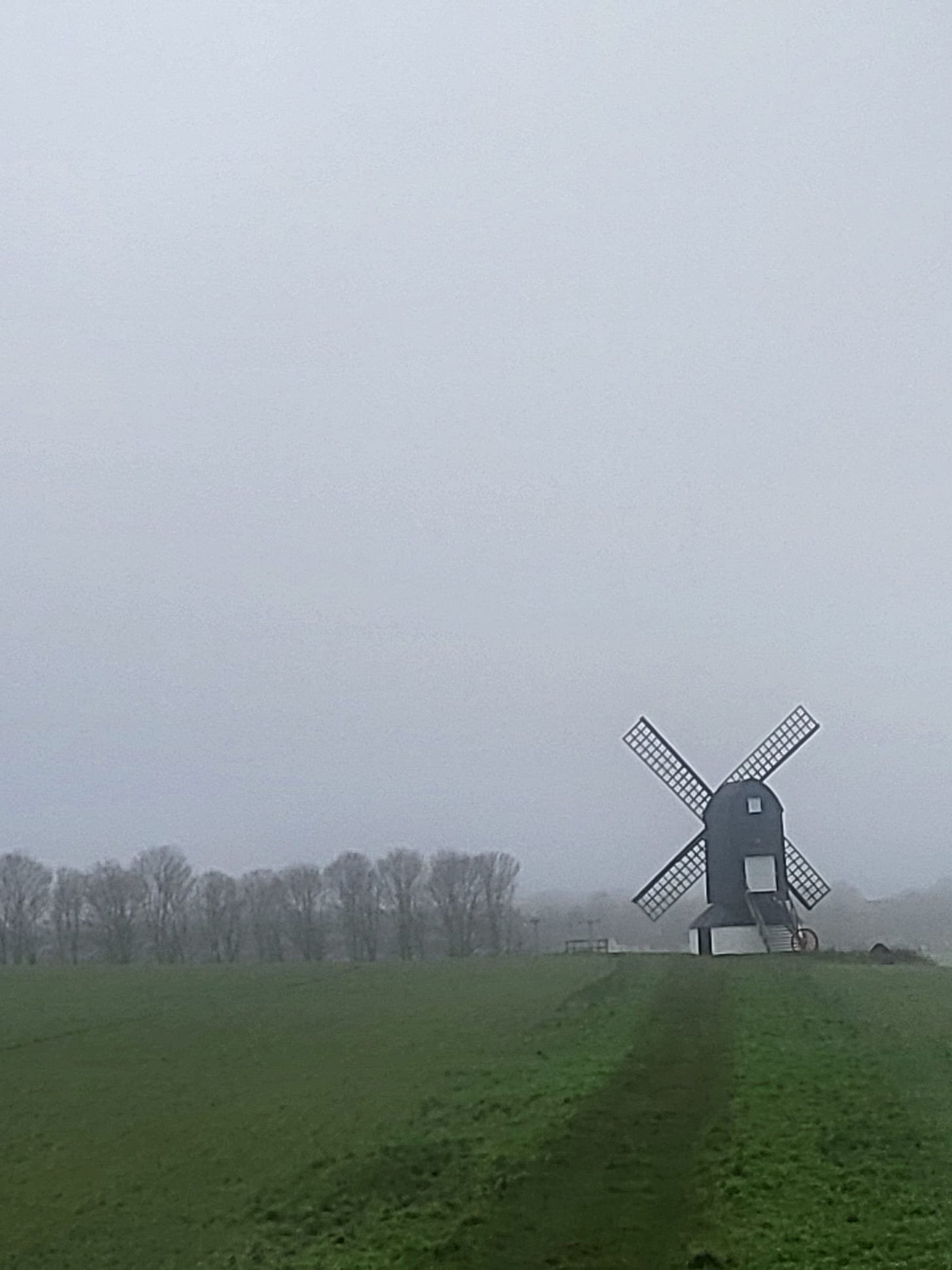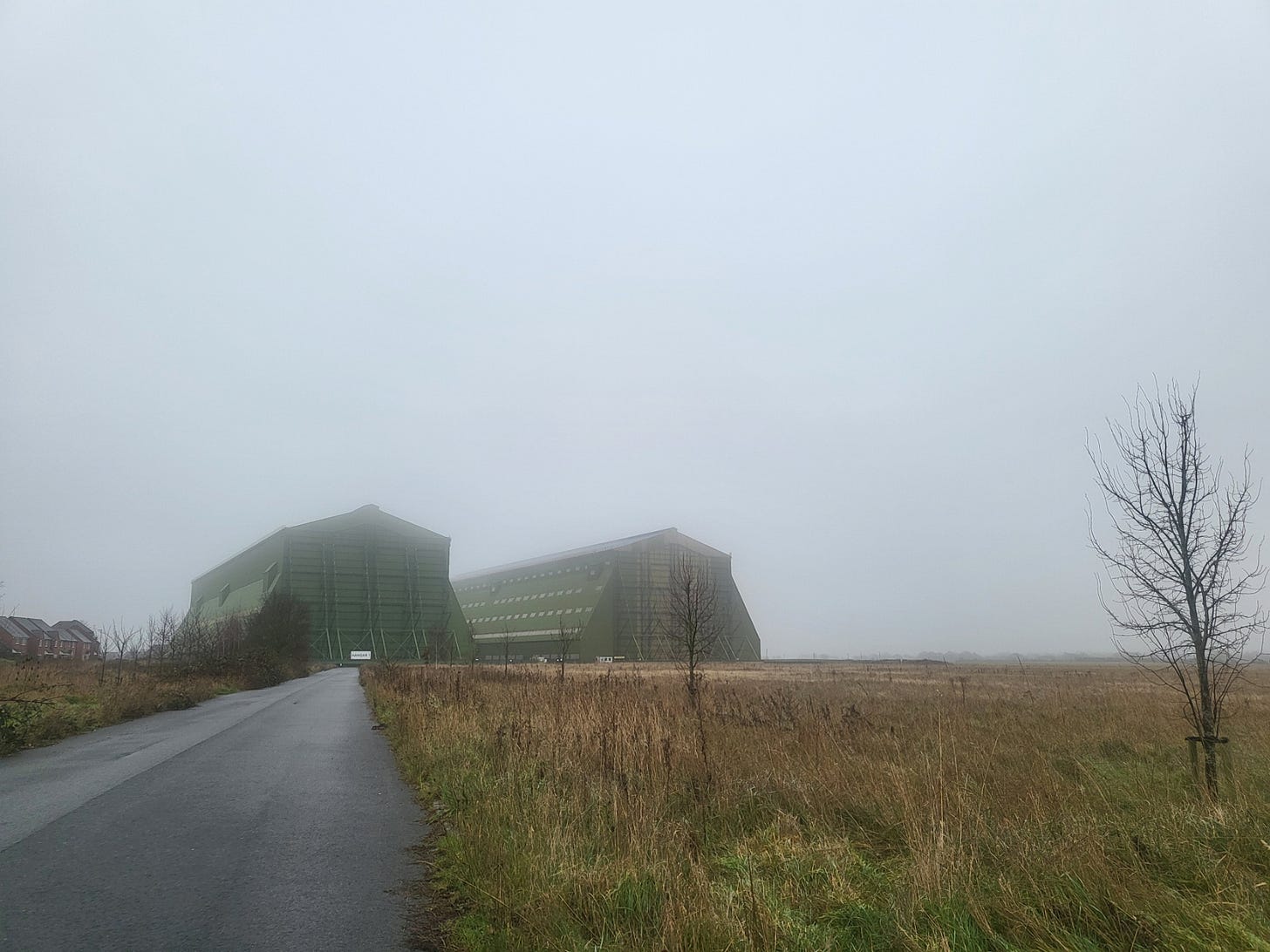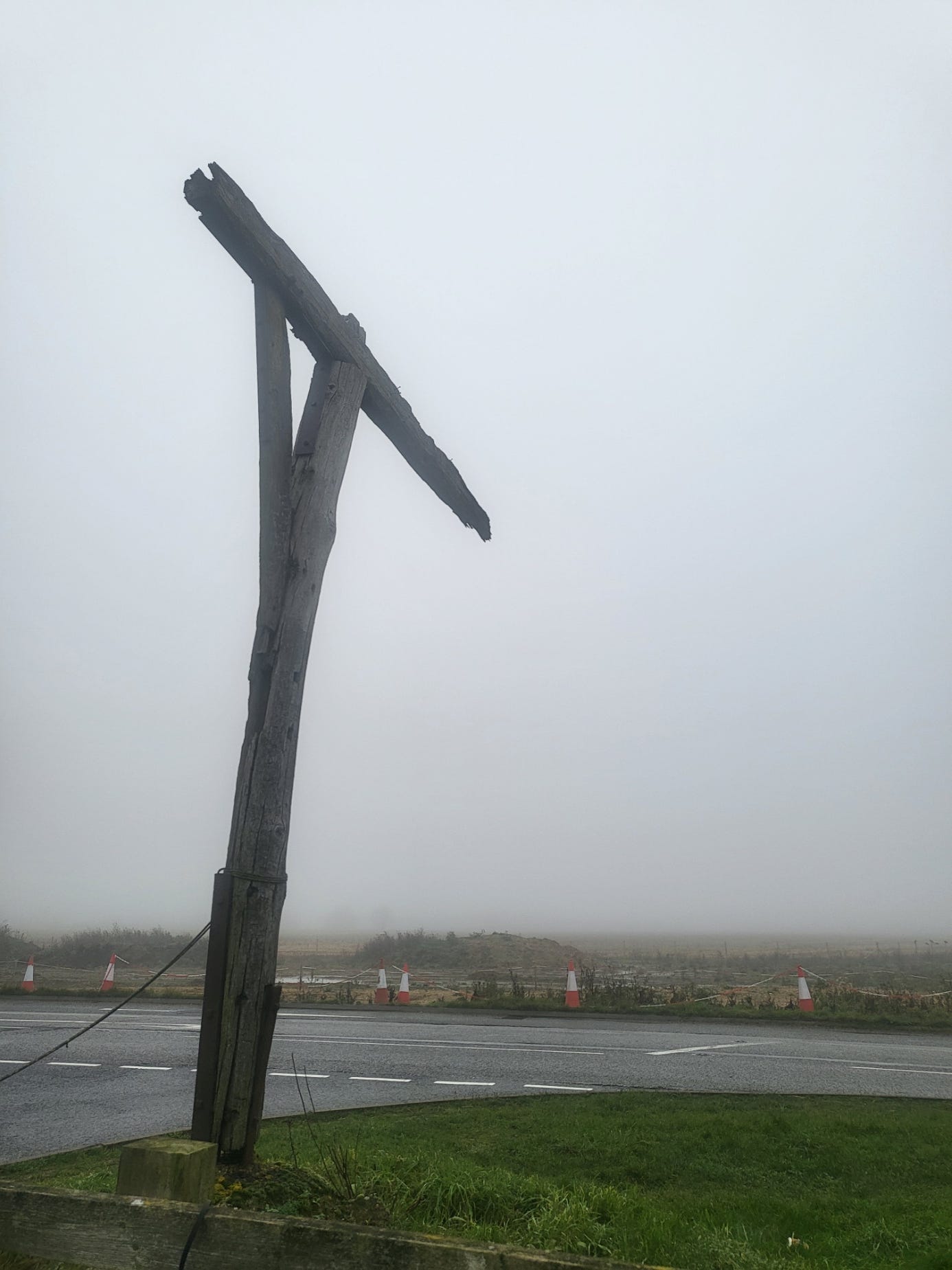This wasn’t a planned post. Mostly because I wasn’t meant to be travelling through the counties of Hertfordshire, Buckinghamshire, Bedfordshire or Cambridgeshire on Boxing Day of 2024.
I was meant to be in Dorset, staying on a National Trust campsite in Norma for the Christmas period. Norma had other ideas. She got as far as Hampshire and decided it was not for her and promptly developed a water leak. With another hour or so to our intended destination, we decided to turn around and head back.
I go away at Christmas to be alone. I am not a family celebrations type of person and while I am happy to see everyone either side of the big day, I like to spend Christmas day in peace, and in pyjamas if possible. Going away in Norma has become a tradition. Usually its a visit to Scotland, but this year I though Dorset would be a nice change. It was not.
So, wanting to delay the return, we negotiated and Norma decided she would pootle along at her own pace if we stopped every 25 minutes to let her have a rest and some water. Christmas Day was spent walking around a very foggy Ashridge Estate in Hertfordshire. It was actually delightful. I took our grim Little Bear to the churchyard of St John the Baptist in Aldbury. There we spent the afternoon of Christmas Day looking for the grave of William Puddiphat, a murdered gamekeeper. I will tell his story in an episode of Epitaph very soon.
After a very peaceful Christmas Day walk through the forest, we had a fry up (a vanlife Christmas tradition) and settled down to plot our route home the following day. Avoiding motorways is not only good for avoiding inconvenient breakdown locations, it’s also great for wayside history spotting on the b-roads of Britain.
Our Boxing Day journey took us toward Milton Keynes, across to Bedford, and finally back to base in Cambridgeshire. Here are all the places of historical interest we happened to pass by without travelling off our intended route. Had I planned the trip further, there would have undoubtedly been more. Nevertheless, I think it illustrates well how ever the most routine of journeys can be made interesting if you keep your eyes open.
-
Pitstone Post Mill, Buckinghamshire
Now owned and cared for by the National Trust, this historic post mill is one of the oldest mills of this type in Britain. For almost three hundred years it ground flour for it’s local community until it was severely damaged in a storm in the early 1900s ended it’s working life. It was donated to the National Trust in 1937 and was restored by a team of volunteers.
Obviously it wasn’t open on the day we passed by, but its on my list to re-visit in warmer weather.
-
Next our journey had us passing by the scene of one of our country’s most famous crimes! You would never be able to spot it unless you already knew the story or location, but our next stop was the scene of the….
Great Train Robbery - 1963
On the 8th of August 1963 this was the spot where a gang of robbers brought the Glasgow to London Royal Mail train to a halt. The robbers, with no firearms involved, escaped with over £2.61 million (almost £70 million in todays money). The bulk of the stolen money has never been recovered and it remains one of the most notorious crimes on the 20th century. Most of the robbers were caught and convicted, with Ronnie Biggs famously escaping in 1965, which led to him living as a fugitive abroad for 36 years. This site isn’t much to look at, but it reminds us that even the most ordinary of scenes can have the most extraordinary stories to tell!
-
Cardington Hangars, Bedfordshire
No photo can really capture the vastness of these structures. Formally known as RAF Cardington, this site is dominated by the airship hangars. Number one shed was constructed in 1915 by the Short Brothers, who were to build airships for the Admiralty. The site was nationalized in 1919 and Number Two shed was brought in from RNAS Pulham in Norfolk in 1928.
Both hangars are now Grade II* listed by English Heritage and no longer in military use.
-
Caxton Gibbet, Cambridgeshire
Our last piece of wayside history on this journey is of a different nature. A replica gibbet post, once situated on a cross-roads and now sat rather unfortunately by a MacDonald’s off a modern roundabout.
The gibbet post we see today is a replica of the one that once stood next to the nearby Ermine Street, a major Roman road running through this part of Cambridgeshire.
While most gibbets were for executed criminals to be hung in chains after their deaths, the gibbet here is said to have been one of the rarer variations, where criminals were gibbetted alive and left to starve or die of exposure. The original gibbet post was still standing in the 18th century, and it’s likely that this replica dates from the 19th, when an inn called The Gibbet Inn once stood where the MacDonalds now sits. I remember the old inn. It was turned into a Chinese restaurant for a time before mysteriously burning down and standing as a ruin for a few years. It’s a shame they didn’t rebuild it, but that’s progress for you…..








